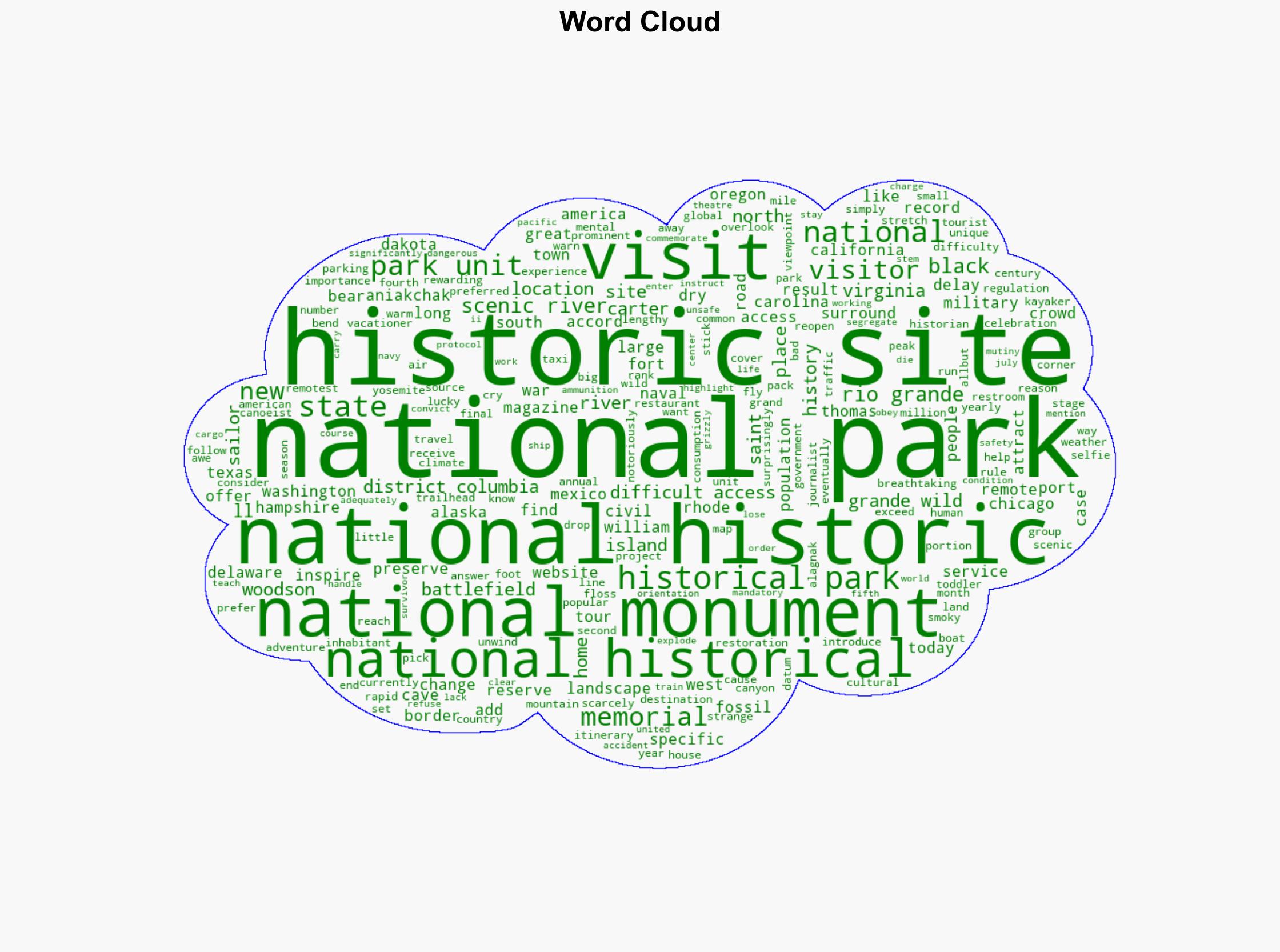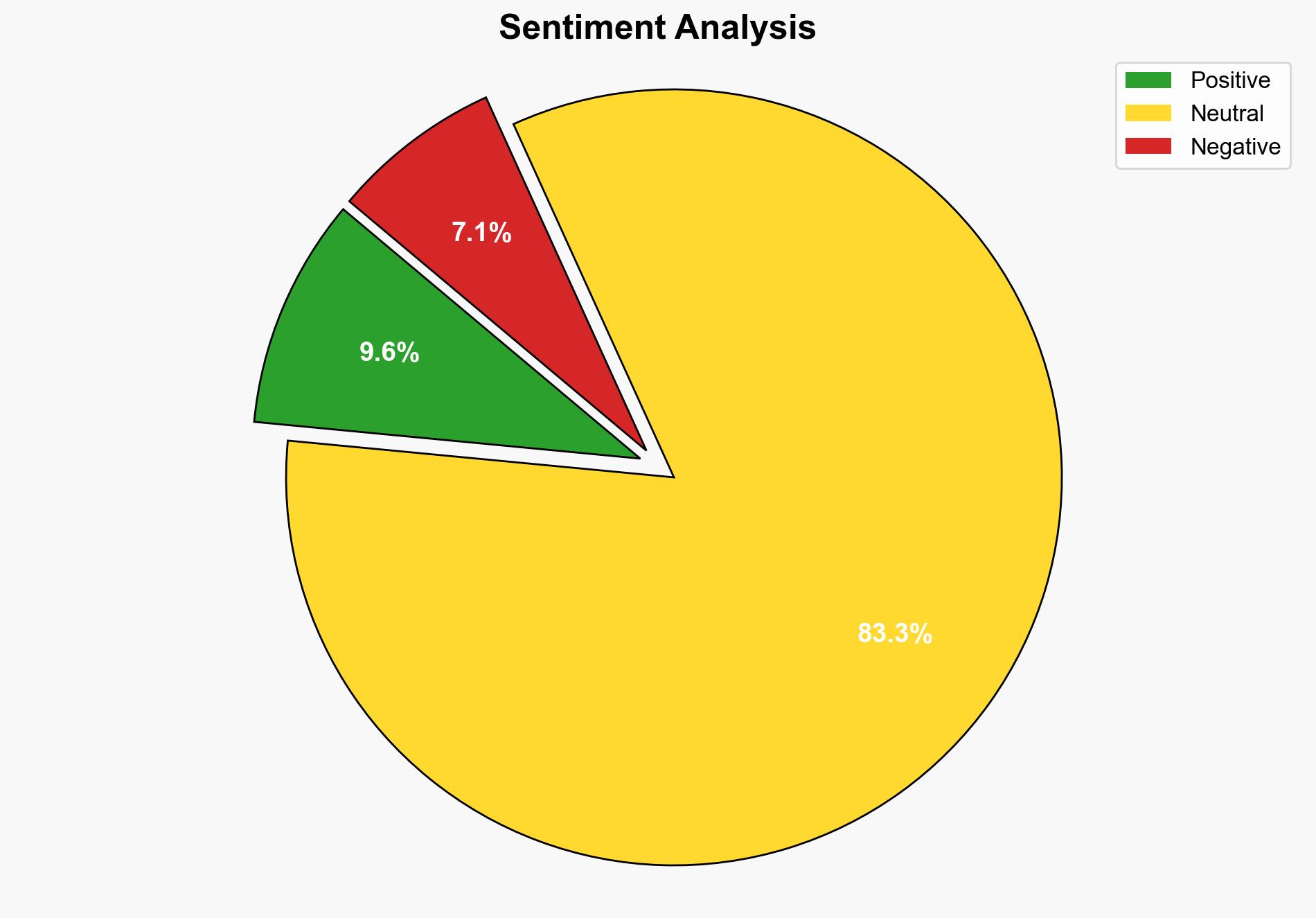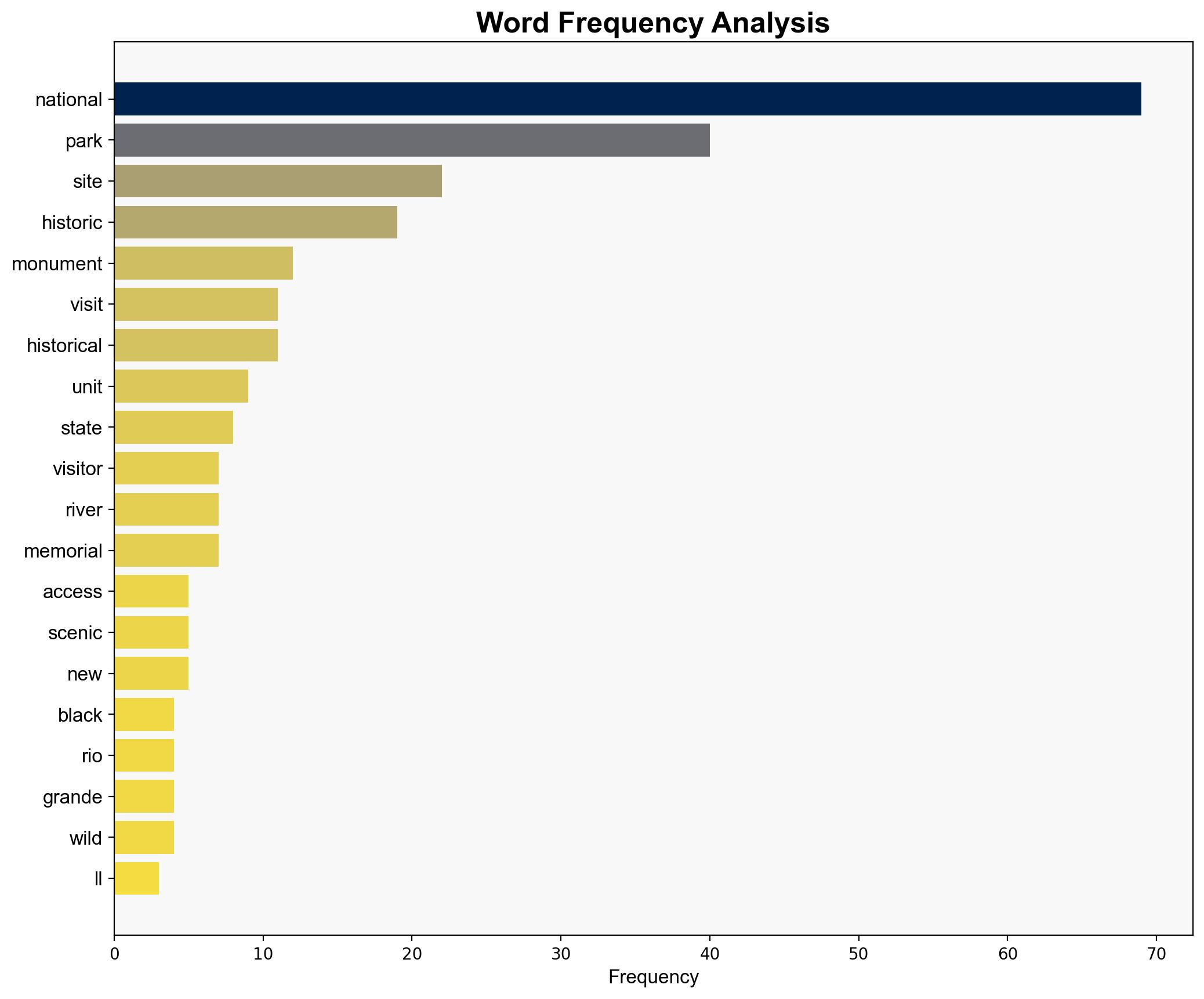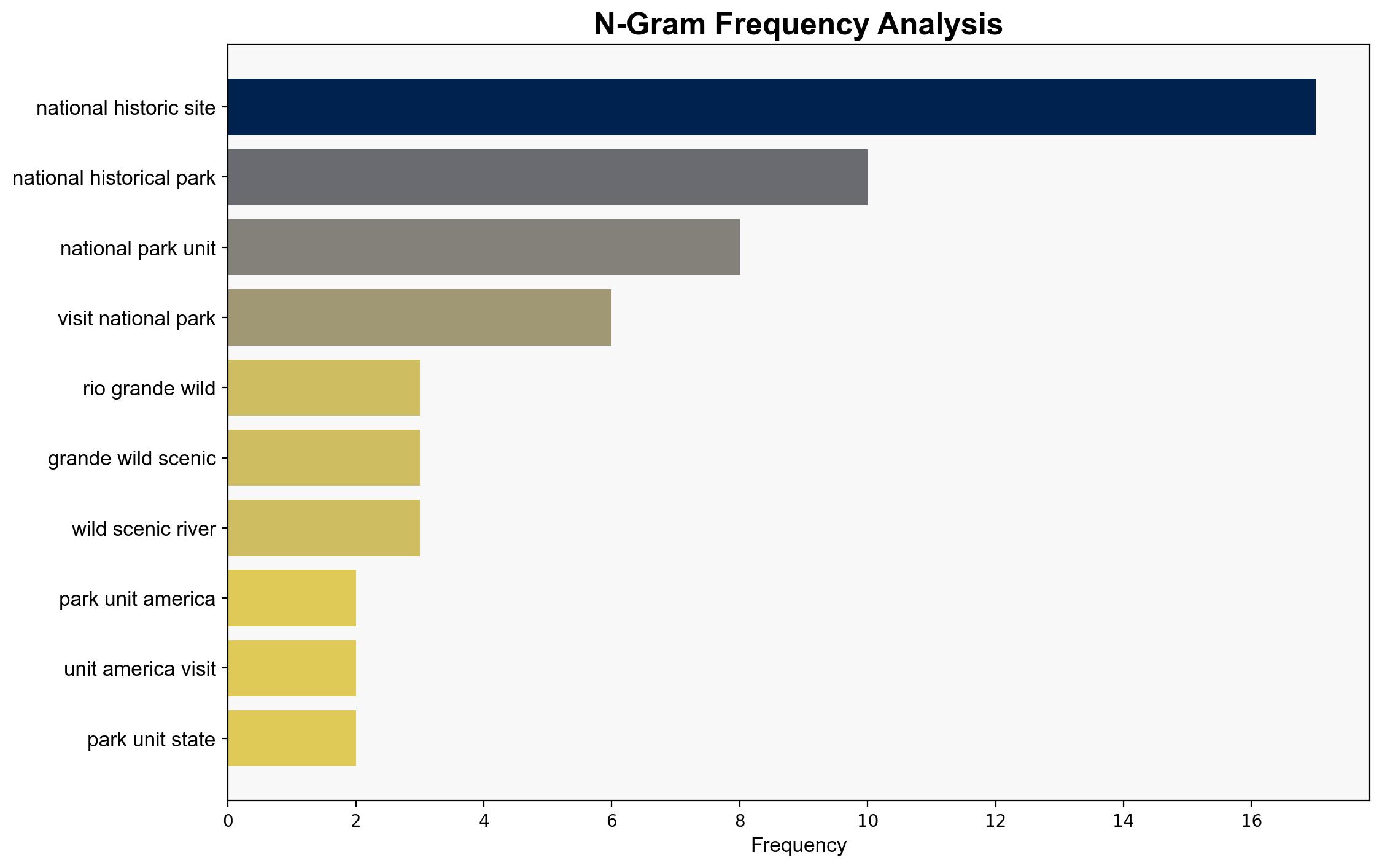The Least-Visited National Park Unit in All 50 States – Mental Floss
Published on: 2025-10-18
Intelligence Report: The Least-Visited National Park Unit in All 50 States – Mental Floss
1. BLUF (Bottom Line Up Front)
The analysis suggests that the least-visited national parks, due to their remote locations and challenging access, offer unique opportunities for conservation and eco-tourism development. The most supported hypothesis is that these parks remain under-visited primarily due to logistical challenges rather than lack of interest. Confidence level: Moderate. Recommended action: Enhance infrastructure and marketing to increase accessibility and awareness.
2. Competing Hypotheses
1. **Hypothesis A**: The least-visited national parks are under-visited due to their remote locations and difficult access, which deters potential visitors despite their unique offerings.
2. **Hypothesis B**: The lack of visitors is primarily due to insufficient marketing and awareness, rather than logistical challenges.
Using ACH 2.0, Hypothesis A is better supported as the source text emphasizes the difficulty of access and remote locations as primary factors. Hypothesis B is less supported as the text does not highlight marketing deficiencies as a significant barrier.
3. Key Assumptions and Red Flags
– **Assumptions**: It is assumed that improving access will lead to increased visitation. Another assumption is that current visitor numbers are solely due to logistical challenges.
– **Red Flags**: Potential bias in assuming that all visitors are deterred by access issues without considering other factors like personal preferences or economic constraints.
– **Missing Data**: Lack of specific visitor feedback or surveys to substantiate claims about deterrents.
4. Implications and Strategic Risks
– **Economic**: Increased tourism could boost local economies but may require significant investment in infrastructure.
– **Environmental**: Greater access could lead to environmental degradation if not managed sustainably.
– **Geopolitical**: Enhanced access to remote areas might raise security concerns, especially near international borders.
– **Psychological**: Changing the perception of these parks from inaccessible to desirable could shift tourism patterns significantly.
5. Recommendations and Outlook
- Conduct feasibility studies to assess the impact of infrastructure development on visitor numbers and local ecosystems.
- Implement targeted marketing campaigns to raise awareness of these parks’ unique offerings.
- Scenario Projections:
- Best Case: Increased visitation leads to economic growth and enhanced conservation efforts.
- Worst Case: Over-tourism results in environmental degradation and local community disruption.
- Most Likely: Moderate increase in visitors with balanced economic and environmental impacts.
6. Key Individuals and Entities
– Carter G. Woodson: Mentioned in relation to the Carter Woodson National Historic Site.
– National Park Service: Responsible for managing and promoting these parks.
7. Thematic Tags
national security threats, environmental sustainability, tourism development, regional focus




